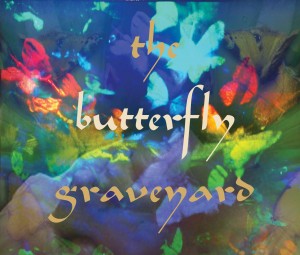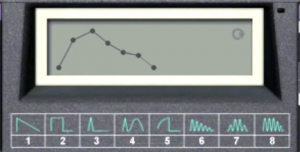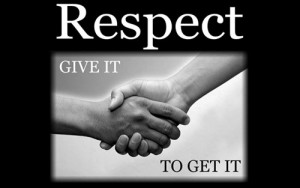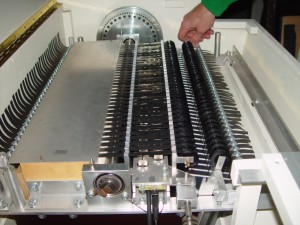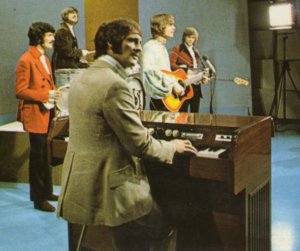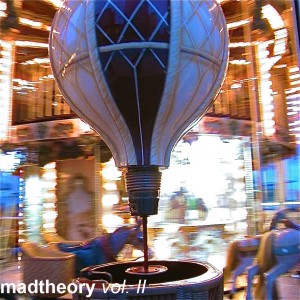madtheory is the backing band for the butterfly graveyard 3pm this Sunday at the Body and Soul Festival, Arbutus Yarns stage. See you there! Gonna be a good one 🙂
BBC Radiophonics live at the National Concert Hall
I recently had the pleasure of the Radiophonic Workshop at the National Concert Hall in Dublin. This was a dream come true. When I was about 10 years old my father joined the Rory Gallagher Music Library. This holds a massive collection of recorded music and spoken word. First it was Goon Show tapes, and later the full BBC sound effects library. Essential Science Fiction Sound Effects Volumes 1 and 2 became some of my favourite albums and a major influence. 🙂 Continue reading
Why vote yes? (Irish Marriage Equality Referendum)
So there’s this gay guy Keith Mills who is voting no. As we get nearer to voting day, some of the no side are (ironically) rolling him out to bolster their claims. I read the article and I was amazed and angered at the doublethink and obfuscation. So I decided to take his argument apart.

1. He believes that civil partnerships are a better way of legally recognising same-sex relationships. This is a misunderstanding of the legal principles involved. Believing something is better doesn’t make you right. You have to have evidence, and he provides none. He’s wrong because a married couple enjoy constitutional as well as legal protection. A civil partnership couple only enjoy legal protection. Legal protection can be taken away, amended or reduced by an Act of the Oireachtas. Constitutional protection can only be taken away by a vote of the people.
Mr. Justice Kevin Kearns explains that, and more in this very clear article which explains what the referendum is all about in layman’s terms. I recommend you read it before you make up your mind.
2. Marriage is not so clearly defined in the constitution that it allows for marriage equality. He claims that “Successive Attorneys General have told their government colleagues that same-sex marriage is in conflict with this”. Well d’uh, that’s what the referendum is about. He’s making a very sneaky obfuscation there.
3. He states that “Obviously other family units exist, and children can be raised successfully outside of traditional marriage” then goes on to contradict himself “The result of allowing same-sex couples to marry is that agencies that are entrusted with finding parents to adopt and foster children cannot legally favour families that can provide a mother and a father, which all evidence suggests is the best environment for children”. The poor man is suffering from doublethink, and in fact the evidence is that there is no difference in outcomes for children. Here is a list of long term studies that prove that there is no difference.
He makes some other points too, but they’re diversionary and unimportant compared to the clangers above. He seems to be just adding points for the sake of it, rather than being honest with a clear and concise argument. But he has to be unclear, because he has no evidence for his claims.
So I encourage you to vote Yes for Equality.
Muki Pakesch TX16W archive
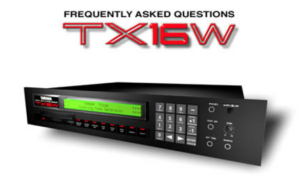
I get a lot of requests about the old Muki Pakesch archive. So here is the entire thing, zipped on DropBox. Enjoy! You might also want to check out my own disks here.
Sounds for Virtual CZ, and the real CZ
The new sounds: VCZ
You can buy my new collection of patches in the Soundware Shop here. 66 patches specially tweaked for VCZ, culled from my extensive and well worked collection created over a period of 25 years. Showcases both the gentle, ambient and atmospheric qualities of the CZ and its punchy hard hitting bass sound. They are saved in vst3 format so you can use VCZs brilliant vst3 patch browser in any DAW, and move patches between them.
The old sounds: CZ-1
Having received a few requests from CZ users who liked my CZ demos, Here are the top 64 of the 102 patches used to create my “Authentic Casio CZ” Kontakt set. Check out the included OPMEMs where patches are mixed and detuned in various ways. It’s a simple and fun way to make new sounds. For example pick two different bass patches and experiment with the OCTAVE and LEVEL settings. The CZ-1 is made for bass. Another classic trick is to layer the CZ with an analogue (or virtual analogue) synth. That way you get digital bite and analogue depth in your bass. Saved in .syx format so you will need a MIDI sysex app to load them into your CZ-1.
Note that this bank is for the CZ-1 only, it is not directly compatible with other CZ synths.
Some background
As a result of my CZ article I was asked by Oli Larkin to beta test his virtual version. I spent some time tweaking my old patches to take advantage of some of the features of VCZ, in particular the better velocity response and the chorus options. I really preferred Chorus A the Roland Dimension D model, having always had a love/ hate relationship with the Casio chorus.
The CZ envelopes are very flexible and one of its great strengths, but let’s face it, they’re not easy to adjust on the original. With a computer based editor, there was always a short lag and an interruption to the sound while the sysex was sent. Oli’s implementation is much smoother to work with than the original, so some of the patches benefitted from that with tweaks.
He has also implemented a Unison mode which is great sounding. Currently it’s monophonic so I’ve implement it on only a few patches. I can’t wait for the update with polyphonic unison! 🙂
New sounds for an old sampler
I got my old Yamaha TX16W back after it spent eight worthy years in a friend’s studio doing backing tracks for a covers band. The release of the Cyclone plugin from NuEdge spurred me to load up my old library. I’d forgotten how many great sounds I made with this thing! It has a unique character, dark and moody. It’s also great at drums.
So I have two new products: a set of 7 disks of unusual sounds from my extensive library, and a 2 disk set of drums. These will load in a real TX16W running Typhoon, and in the Cyclone plugin too.
The demo was created with the plugin and limited to 16 voices like the real thing. Some reverb from a contemporary Alesis Quadraverb IR. No eq apart from a touch of top end boost on the stereo mix.
madtheory TX16W discs
Unusual pads, atonal chords, synths and atmospheres showcasing the unique qualities of this sampler. Low sample rates, extreme transposing and those weird filters that kinda don’t do much but still add a vibe. The samples are entirely original, there’s nothing here from the original Yamaha Japan or UK libraries or the Muki Pakesch archive although there is a small number of sounds from various magazine CDs- but using some tricks of the TX with Typhoon.
madtheory TX16W drumkits
The TX16W with Typhoon excels at drums. Snappy envelopes, multiple outs and straightforward mute groups, layering, mapping etc. Use these kits as templates for your own, or just enjoy sharp sounding TR-808, TR-909, TR-505, DR-110, CR-78, Linn Drum and SCI Drumtrax kits, as well as my own “Realdrum” kit made up of a selection of sounds from classic digital drum machines.
What happened to politeness?
Famous Samples part 3: Choirs
So this week we have three sounds. I can’t get enough of keyboards that go “awh”, and neither can anyone else apparently. Back in the seventies the choir was the main reason bands took the heavy and unwieldy Mellotron (instead of a choir) on tours around the world. No synth could do that sound. But the Mellotron used several miles of analogue tape, which was not very reliable.
When the Fairlight arrived, everyone used it for voice sounds. All digital, no more wobbly and unreliable tapes. Variations of people going “awh” then transposed up and down the keyboard almost defined the sound of the eighties. The Fairlight had two whole disks comprised almost entirely of “awh” sounds: “Humans I” and “Humans II”. To be fair, there was also “La” “Doo” and “Mmm”, plus screams, laughs and farts. But you know which one got used the most- the famous Arr1 voice. That’s an “Ah” with a bit of an “Rrr” in the sustain. But Arr1 has been done to death, so I’m not doing it again here.
So first up it’s the choir from the Fairlight series 3. Given the pedigree, I guess Fairlight decided they had to have a seriously good choir. And they achieved it. A professional choir with excellent balance all going “Awh” for as long as you hold down the keys. This is a very beautiful sound. It does have an odd noisiness to the high end, but it is an eminently useable sound. I used it in this track layered with a Mellotron for a great spooky effect.
Next is the Emulator II choir sound. Emu managed to acquire the original Mellotron master tapes, so this choir is a very nice combination of the male and female choirs from those, nicely looped and mapped across the keyboard. The later Emulator III library has a fuller version of each Mellotron sound. It’s cool to use them without the extra weirdness imparted by the tape playback on a real Mellotron. They sound more timeless to my ear. The tape sound dates things, in a good way. But it still has that “dead people singing” effect. Or dead people going “Awh”.
Lastly, it’s the choir from the Kawai K4. Every synth manufacturer raced to get that Fairlight sound from a cheaper instrument. So in many cases they simply sampled the Fairlight or the Emulator II. Examples abound from the Korg M1 choir (a cut down version of the series 3 choir) to the Casio FZ-1 and Ensoniq Mirage strings (versions of EII marcato). This K4 sound was used very effectively on the B Side of LFO’s eponymous debut hit, a techno classic. Cmin, Amin, Eb min, root position, lots of reverb. Enjoy 🙂
Here are the three samples in Kontakt 5 compressed format: Famous Choirs.
Famous Samples Part 2: Fairlight Strings
Last week I spoke about how the Emulator was a much more advanced sampler than the Fairlight. The Emu machine used shared memory, so all of the samples could be mapped across the keyboard for polyphonic playing. The Fairlight being a much earlier machine was more crude. There was one memory for each of the 8 notes. So while you could map samples across the keyboard it was not possible to play all of those samples polyphonically, although it was “multi-timbral” in that you could play eight different sounds at the same time. The Emu could do that too, but in a much more musical manner because of the shared memory.
Perhaps because of this limitation Fairlight sounds tend to be more special sounding whereas the Emu tends towards utilitarian, for example replacing string players, rather than doing new things with sounds. Because only one sound could be sampled into the Fairlight people tended to put a lot more time and effort into them, and that one sound became a focus of attention. You had to have a sound that worked well across the entire range of the keyboard. The Fairlight transposed the sound by changing the playback speed, whereas the Emu basically left out bits of the sound instead, because it was not possible to change the speed of each sample separately with shared memory- it would change the speed of all samples in memory, which would bet pretty annoying! Also because the Fairlight was the first sampler, artists who desperately wanted to work with natural sounds would have used that first, so the gloss of the new had worn off by the time the Emulator came along. Bear in mind that tape allowed artists to work in a similar way, but it was vastly more time consuming and complicated.
Our famous sound for this week is (usually) called LOSTR2 (download the Fairlight strings zip file here) in the official Fairlight library. I say usually because there were at least three, possibly more, versions of the “complete” library. There is another quite different sound with the same name. So it actually took me a few years to find the original version of this sound. It seems to be from the series I machine, which means it was sampled at only 16kHz. There isn’t really a single official library, partly because there were 3 versions of the 8 bit Fairlight (I, II, IIx) and also at some point the extant sounds were edited so that they were properly tuned and looped for the IIx. This was done by the Fairlight programmer Peter Weilk, apparently by recording the sounds back to tape and varispeeding them! He still sells and services these wonderful machines today.
LOSTR2 is one of those rare single samples that sounds great above its original pitch and below it. So I’ve included two versions of the sound. One was taken from the analogue outputs of a famous Series III, the other is directly from a disc image file so it’s an 8 bit 78kbyte audio file. There’s a lot of mileage in editing the start point on this sample to change the attack, as you can hear in these two Kontakt programs.
Here’s a madtheory track called Avez Vous…? featuring extensive use of LOSTR2.
This is a very powerful sound, and probably got used just as much as Marcato Strings, but is probably not as widely known. Perhaps the most famous song it’s used on is Mike Oldfield’s international hit Five Miles Out where it’s cleverly vocoded with the guitar and also doubling the bass at another point. If you have the album you can hear it in a more exposed form on the long instrumental “Taurus II”.
Equally well known would be the middle section of U2’s Unforgettable Fire, programmed by Brian Eno on a hired machine in Dublin. You’ll also hear the ORCH5 orchestra hit for which the Fairlight is best known. It’s an excellent bit of arranging, with Fairlight VPIZZ pizzicato. And lots and lots of reverb 🙂 Here is Keith Emerson trying to convince us that the Fairlight sounds real:
The 8 bit Fairlight was never very good at loops. In Jean Michel Jarre’s“Night in Shanghai” you can hear that he stops sounding the note before it gets to the clunky loop point. Later in the song he lets rip on the keyboard- you can still here the loop but it’s covered by the other sounds and some echo and reverb. This is a nice genuinely live version of the song from the China concerts in 1981. The opening shot is on stage so you can see him playing the Fairlight:
Here it is on The The’s song “Twilight of a Champion” from their classic album “Infected”.
And here’s a Yello B-Side from 1983, the first time I ever heard this powerful sound and was fascinated by it:
Famous Samples part 1: Emulator II Marcato Strings
I’m a bit obsessed with old samplers, but I’m not really a fan of old hardware. Having owned several hardware samplers, I’m really happy these days with NI Kontakt and Redmatica Autosampler. The old hardware was limited in many ways. The cool thing is though, that a lot of talented people worked hard within those limitations, and got some excellent results. There are some older sounds that you wouldn’t really be inclined to do nowadays with gigabytes of storage. Like this classic string sound: 538kbytes!
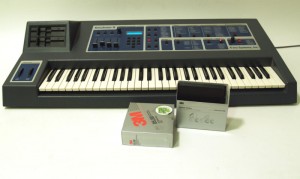
So we’ll be looking at the classic sounds from these samplers:
Emu Emulator
Emu Emulator II
Fairlight CMI I, II, IIx (the libraries overlap)
Fairlight CMI III
Casio FZ-1
Ensoniq Mirage
Yamaha TX16W
And a few other things such as the Kawai K1, K4 oh, and the Synclavier!
You might say this has been done before. Well it has, but not quite like this. Libraries like the excellent UVI material are sampled from the machine’s analogue outputs. Mine are different. I’ve looked at various ways of converting the old sounds from the original disks into Kontakt, trying to keep the original multisample positions and mod settings where appropriate. So we’ll start with the Emu Emulator II.
As a sampler, this was really more advanced than the Fairlight II, its only real competitor at the time. The Fairlight was also a sequencer and rudimentary additive synth. The Emu excelled with more memory, proper multisampling, velocity crossfading and an entire analogue synth engine. So it was more of a musical instrument than the Fairlight computer.
Of course, the sound quality was not perfect, so engineers of the day used all sorts of processing to get the thing to sit properly in a mix. Some people like the sound of crappy digital to analogue converters. Not me! But I think you’ll find it interesting how much of the character is encoded in the sampling process, rather than the playback process. Playing back these sounds in a modern sampler brings that sheen that engineers were always trying to get back in the day.
I converted the EII material using EMXP. First converting to SoundFont format (which Emu developed from the EII) and then importing that into Kontakt. The translation is seamless about 50% of the time! Sometimes you end up with strange filter settings and overlapping samples. Luckily, the classic Marcato strings is in the seamless category.
This sound was on the first disk of 5 sounds Emu released with the machine. It’s a big powerful sound even today. There’s a version of it tucked away in the Reason factory library. It’s been used on countless hits, but most notably INXS’s Never Tear us Apart, and the Pet Shop Boys West End Girls.
Here it is for download in WAV and Kontakt format. I’d recommend the free Kontakt player so you get the samples all set up correctly ready to play as they would been on a real EII.
Update: for those of you using the WAVs, here is a text file with the loop points, tuning, mapping and VCA info.

